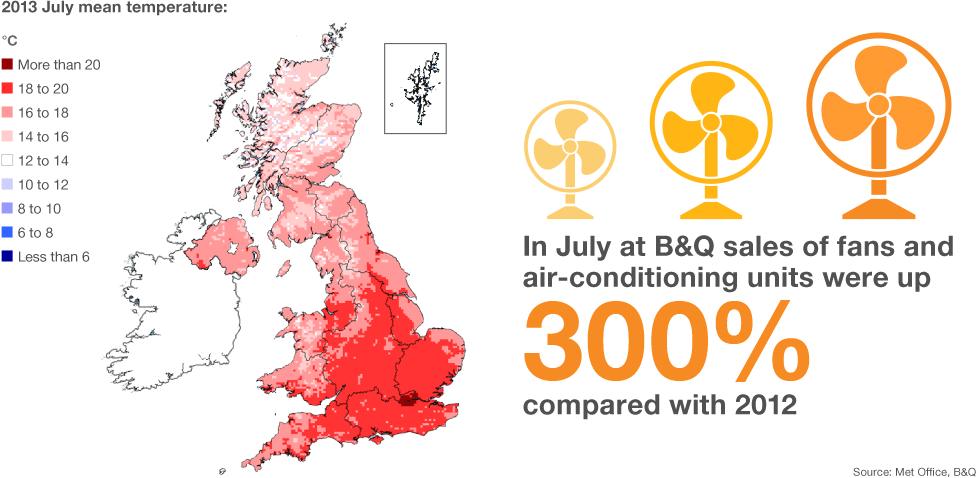Summer of 2013
- Published
It was a season with much to celebrate. The Ashes were retained in cricket, Andy Murray won Wimbledon and a Brit claimed the yellow jersey in the Tour de France for the second year running.
But, after a harsh winter and record-breaking cold spring, for most of us the greatest reward was that Britain basked in sunshine. So, now the nights are drawing in, how does summer 2013 compare?
Well, it was the ninth warmest since records began in 1910.
The 10 warmest summers

Summer 2013 was also much, much sunnier than last year. According to the Met Office, there were 588 hours of sunshine, making it the seventh sunniest summer since records began in 1929.

The most notable weather of the summer was the prolonged heatwave in the middle of July, when temperatures regularly passed 30C (86F). It was the most sustained period of hot weather since July 2006.
The July heatwave

Consequently, consumers gobbled up a host of summer treats.

This year's strawberry harvest started three weeks late, towards the end of May. As a result, the peak harvest coincided with the Wimbledon tennis championships - where the eating of strawberries and cream is an annual tradition.


Over the summer, many areas of the UK hit average temperatures in the late teens and early 20s. The mean temperature in the period from 1 June to 28 August was 15.2C (59F), some 0.8C above average.

This summer also stands out for its lack of rain. While it was the driest summer in the UK as a whole since 2006, south-east England and East Anglia had their smallest amount of rain since 1995.
In contrast, the recent summers of 2007, 2008, 2009 and 2012 were among the 10 wettest on record.
Annual UK rainfall

Indian summer?
But with temperatures close to 30C (86F) in south-east England in early September, are we on for an Indian summer? BBC Weather says it's too early to say.
What is an Indian Summer?